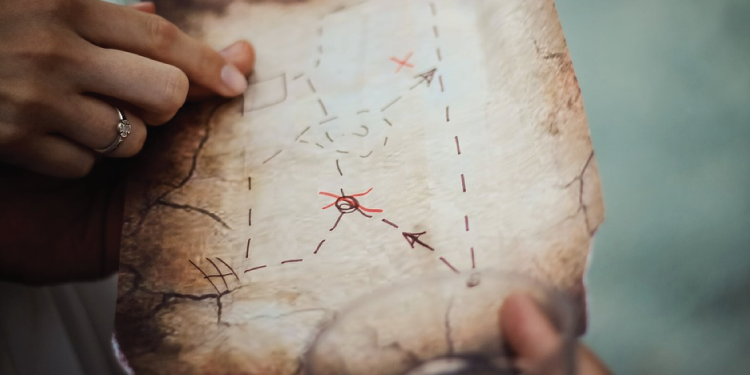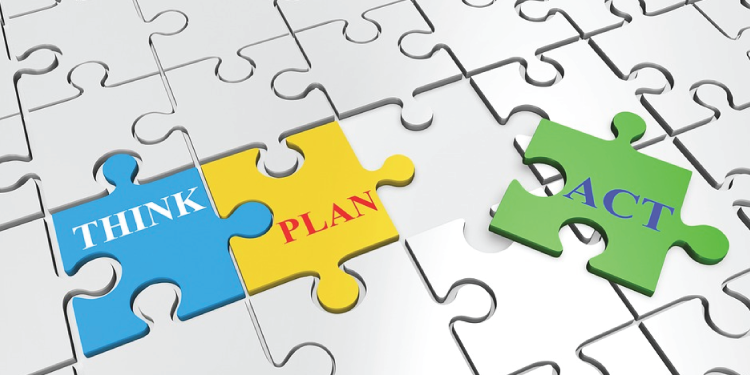
Customer journey mapping is having a moment.
Using customer journey maps is becoming almost (almost!) commonplace. Organizations see how beneficial mapping the customer experience is. It’s a way to understand the experience your customers are having so you can improve those confusing, frustrating or neglected parts on the journey.
After completing the exercise of putting one together, many organizations don’t take any steps beyond that. The map is complete, so their work is done… Or is it?
They have created a list of action items and asked someone to be the champion of the journey map. They even spent a lot of money on fancy software to track improvements. The map was reviewed with leadership. Everyone earned some well-deserved pats on the back.
And then they go back to working exactly like they had worked before the mapping project. Their decisions are based on short-term deadlines instead of long-term thinking. They ask for cooperation and collaboration from other departments based on a goal they are trying to achieve, not the customer’s actual experience. They roll out new products just as they had before, without consulting the map or considering the customer journey.
It happens. And then maybe a year or two later, perhaps even longer, the map is all but forgotten. So you know what happens then? Some leader reads about customer journey maps and thinks “That’s a great idea!” So the entire process starts again, with a few team members saying “Didn’t we do this recently?”
Instead, make sure the goals of mapping your customer’s journey are clear from the onset. And then use that map as part of your workflows moving forward. Here are a few ideas.
Why are we mapping the journey in the first place? Have a clear goal upfront and remind everyone who participates in the process about it on an ongoing basis. A good goal is “to understand and improve the big and small moments in our customer’s experience with us, resulting in an increase of X% in retention and/or revenue in the next 2 years.” A not-so-good goal is “Our VP read a book on customer experience and thinks this is important.”
Once the map is finalized enough to be used, make sure the goals of how to use it are obvious, too.

It’s one thing to say “here’s the map” in a road show across your organization. It’s another to say “as you develop new tools and products, or create new marketing campaigns, or even redesign our invoices, this is how you should think about your role in the customer experience.” The map shouldn’t be abstract, and it shouldn’t be about the journey in an abstract way.
The map should be about real, living, breathing customers.
These are people and sometimes when we talk about maps we leave out that critical point. It’s not about “point-of-sale transactions,” it’s about “think about how frustrated the mom trying to buy a gift is – on her way home from work while making it to daycare pickup on time. That’s when she has to abandon the errand of buying the gift because the line is too long at the register.”
In our quest for simplicity, we often leave the real story of the emotions out of the map. Help everyone in your organization fill in the blanks a bit with more robust imagery about who these people are, not just what they are doing. Then ask everyone in your organization to consider the work they do, and how it impacts these people.
That map can get dusty if nobody uses the thing. A cross-functional team of representatives from many areas of the organization can help stay in touch with changes that are being made and how that should impact the map.
If it’s the first time a map has been rolled out in the organization, people will forget to use it. But a team of people who are seeking ways to use it AND ensuring the map itself stays current helps others remember to incorporate the journey map into their decision-making processes.
The best teams also bring information to that group and out of that group. It’s a chance to say “we’re planning a new mobile app” to the journey mapping team AND coming back to the mobile group and saying “this is how our plans will affect the journey for the customer.” That way, the map is getting used for strategic planning and critical understanding while being updated with new parts of the journey as they happen.
And as I truly believe the process often outweighs the product, meaning the act of putting the map together can be enlightening on its own. But once the product is created, it’s imperative it’s used to help the actual customers. It’s critical to keep the map up-to-date and shared throughout the organization. It’s a living tool, not a static deliverable. Treat it as one and you will reap the rewards of those initial efforts.
Good luck on your mapping initiatives! Customers need it more than we think!
Related: Customer Journey Mapping Workbook
Our Customer Experience Investigation™ team is here to help! Together, we can use what you’ve already done to make a bigger impact, or we can start off on the right foot from scratch. Contact us and start creating Fewer Ruined Days™ for your customers today!
 Jeannie is an award-winning customer experience expert, international keynote speaker, and sought-after business coach who is trailblazing the movement from “Reactive Customer Service” to “Proactive Customer and Employee Experience.” More than 500,000 people have learned from her CX courses on LinkedIn Learning, and her insights have been featured in Forbes, The Chicago Tribune, The Wall Street Journal and NPR.
Get Jeannie’s insights in your inbox each week by subscribing to The Weekly Win and follow her on LinkedIn, Instagram and YouTube.
Jeannie is an award-winning customer experience expert, international keynote speaker, and sought-after business coach who is trailblazing the movement from “Reactive Customer Service” to “Proactive Customer and Employee Experience.” More than 500,000 people have learned from her CX courses on LinkedIn Learning, and her insights have been featured in Forbes, The Chicago Tribune, The Wall Street Journal and NPR.
Get Jeannie’s insights in your inbox each week by subscribing to The Weekly Win and follow her on LinkedIn, Instagram and YouTube.